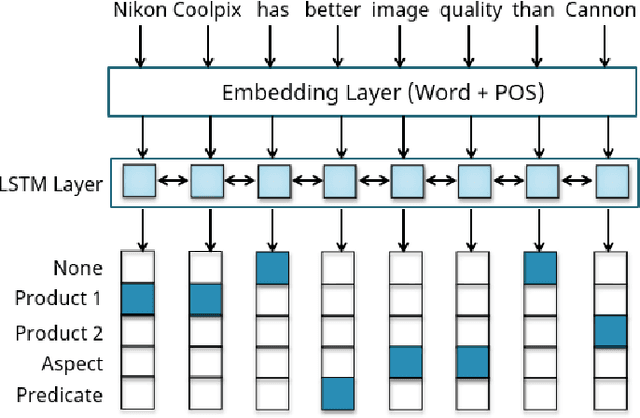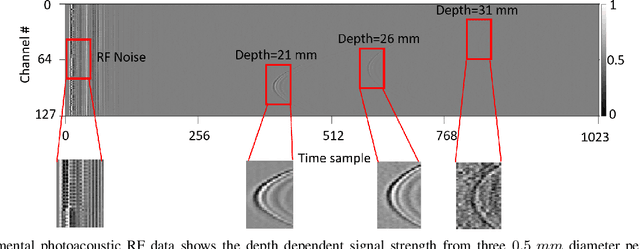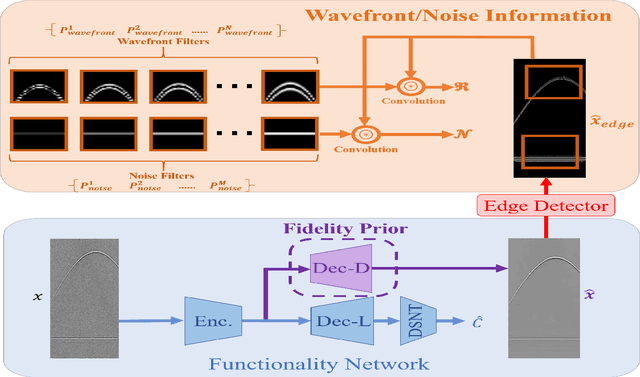Sumit Agrawal
Extracting Entities of Interest from Comparative Product Reviews
Oct 31, 2023



Abstract:This paper presents a deep learning based approach to extract product comparison information out of user reviews on various e-commerce websites. Any comparative product review has three major entities of information: the names of the products being compared, the user opinion (predicate) and the feature or aspect under comparison. All these informing entities are dependent on each other and bound by the rules of the language, in the review. We observe that their inter-dependencies can be captured well using LSTMs. We evaluate our system on existing manually labeled datasets and observe out-performance over the existing Semantic Role Labeling (SRL) framework popular for this task.
* Source Code: https://github.com/jatinarora2702/Review-Information-Extraction
Simultaneous Denoising and Localization Network for Photoacoustic Target Localization
Apr 30, 2021



Abstract:A significant research problem of recent interest is the localization of targets like vessels, surgical needles, and tumors in photoacoustic (PA) images. To achieve accurate localization, a high photoacoustic signal-to-noise ratio (SNR) is required. However, this is not guaranteed for deep targets, as optical scattering causes an exponential decay in optical fluence with respect to tissue depth. To address this, we develop a novel deep learning method designed to explicitly exhibit robustness to noise present in photoacoustic radio-frequency (RF) data. More precisely, we describe and evaluate a deep neural network architecture consisting of a shared encoder and two parallel decoders. One decoder extracts the target coordinates from the input RF data while the other boosts the SNR and estimates clean RF data. The joint optimization of the shared encoder and dual decoders lends significant noise robustness to the features extracted by the encoder, which in turn enables the network to contain detailed information about deep targets that may be obscured by noise. Additional custom layers and newly proposed regularizers in the training loss function (designed based on observed RF data signal and noise behavior) serve to increase the SNR in the cleaned RF output and improve model performance. To account for depth-dependent strong optical scattering, our network was trained with simulated photoacoustic datasets of targets embedded at different depths inside tissue media of different scattering levels. The network trained on this novel dataset accurately locates targets in experimental PA data that is clinically relevant with respect to the localization of vessels, needles, or brachytherapy seeds. We verify the merits of the proposed architecture by outperforming the state of the art on both simulated and experimental datasets.
 Add to Chrome
Add to Chrome Add to Firefox
Add to Firefox Add to Edge
Add to Edge